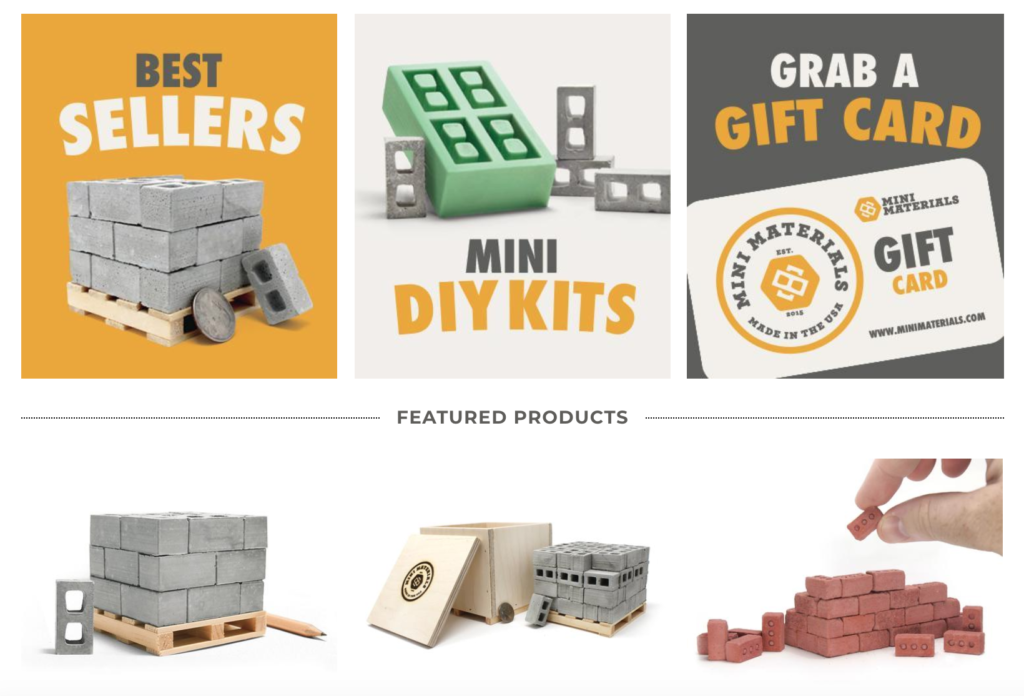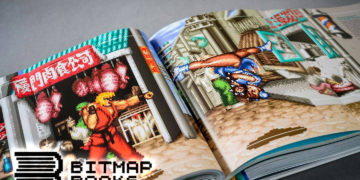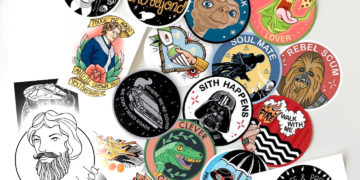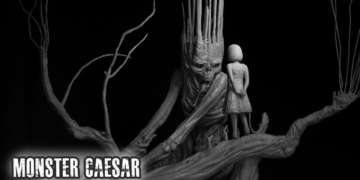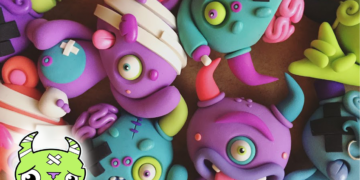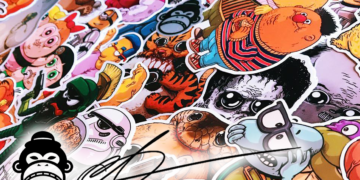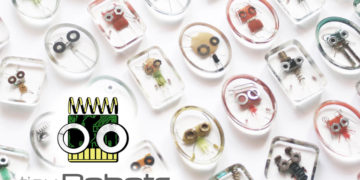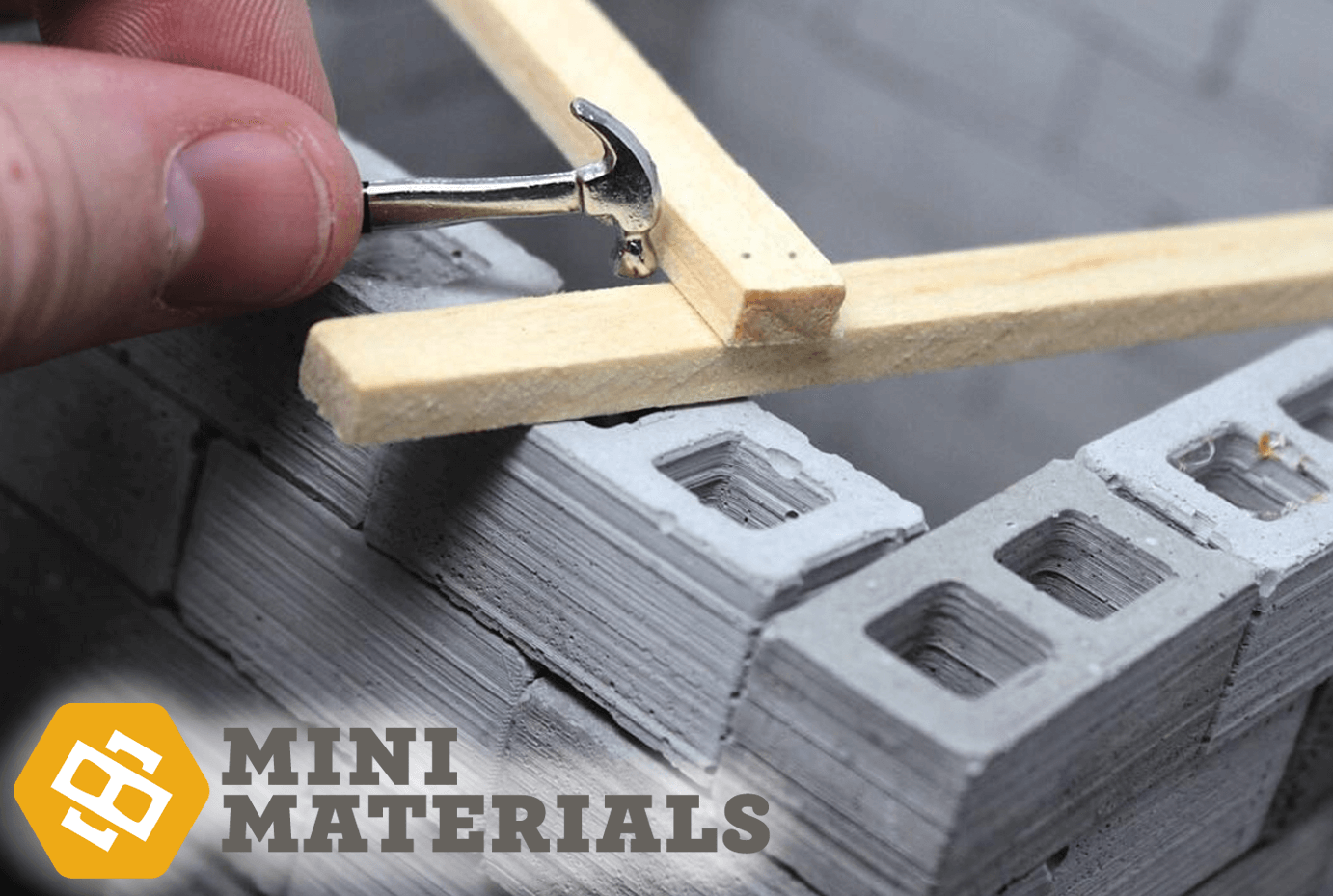
In our Makers section we are introducing you to the awesome people behind innovative products. Our guest this week is Erik Polumbo the co-owner of Mini Materials.
Please tell us a little about your background and what you are doing.
My name is Erik Polumbo and I co-own Mini Materials with our founding partner, Mat Hofma. Mat’s background is in graphic design and marketing and mine is in business development and sales. Mat and I met in college at the University of Central Florida in 2005 and worked together at a retail store for several years. We graduated and worked in various jobs and positions for several years but always kept in contact. I was an absent groomsman at Mat’s wedding and he has never let that go. I believe he secretly decided owning a business together would allow him to pay me back for missing his wedding day by making me work the lion’s share of hours in the warehouse. All kidding aside, the partnership we have is based on relying on each other’s strengths and staying in our proper lanes and so far we’ve been able to create an enjoyable company we co-own.
Mini Materials started with miniature cinder blocks, and by miniature Mat started with a 1:12 scaled version. Meaning 1/12th the length, 1/12th the width, and 1/12th the height of a normal 16” x 8” x 8” cinder block or cement masonry unit. He added a few other products in the same 1/12th scale and when I joined the company we decided to add new scales to our product line.
“It’s all about achieving realism. We won’t do a new product if we can’t make it using the same materials as their replicated larger versions. “
Every cinder block is made with a cement mixture, every pallet is made with authentic pine wood and connected with nails and not glued together.
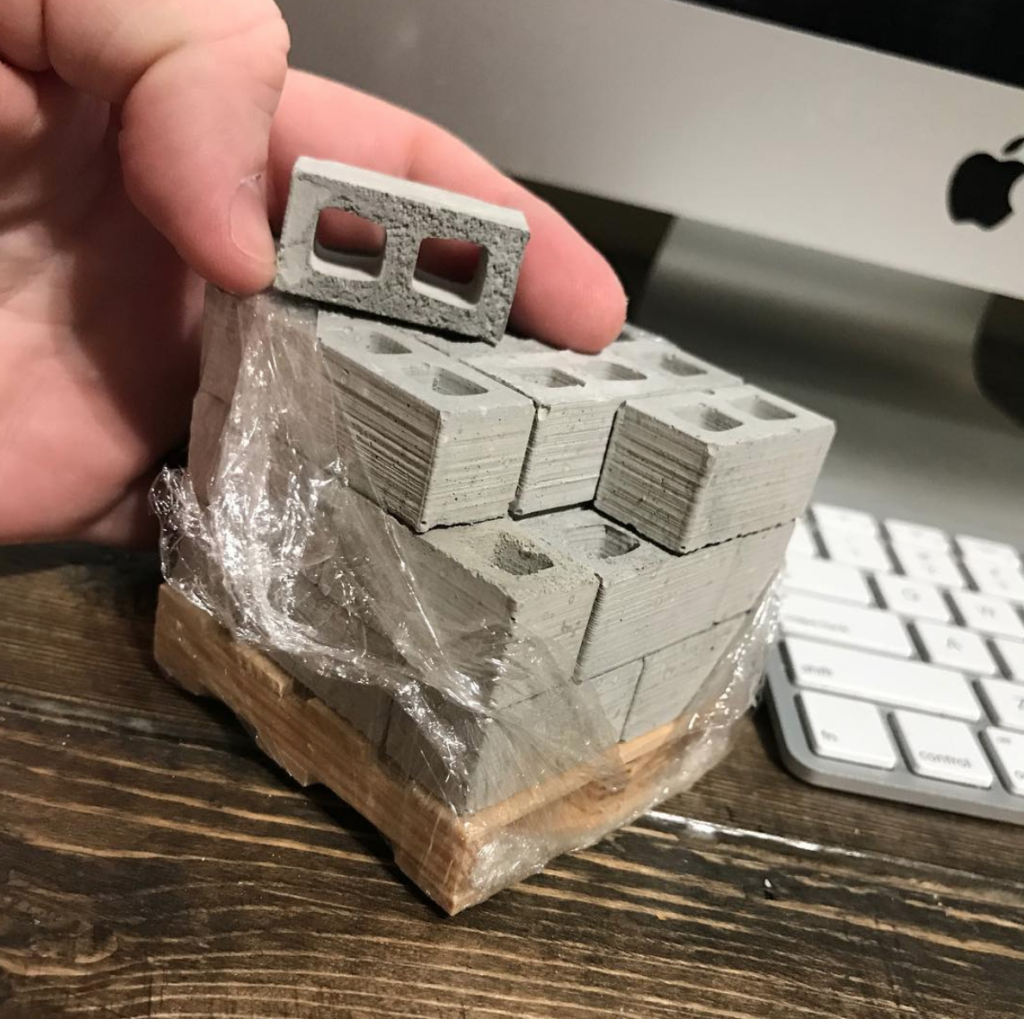
We’ve allowed our customer base to dictate who we focus our marketing efforts towards. Due to their small size we recommend them for children older than 6 years of age and definitely can serve an educational purpose, but for the most part these are marketed to the novelty-seeking adult or the hobby market where they can put them into their gamer dioramas, miniature dollhouse construction, fairy garden displays, model railroad sets, or trade-based diorama’s for architects, construction companies, or even artists.
We are strictly eCommerce at the moment but are exploring some shelf-space options at brick & mortar retailers. Our main platform is on our website at www.minimaterials.com. We are on Etsy and sell a few items on Amazon as well. We do a decent amount of wholesale business with boutiques and larger eCommerce platforms with similar niches.
What inspired you to create Mini Materials?
Mat knew he wanted to start a business but wasn’t entirely certain what to do. He randomly saw someone making mini cinder blocks for fun online and wanted to buy some, but they weren’t for sale. He taught himself 3D design in SketchUp and made molds from 3D prints. At the time the startup costs were under $500 so worst case he taught himself 3D design, web design and prototyping for $500 and best case he’d sell a few and make a couple dollars.
Obviously, getting into a business that isn’t a known commodity is not always the most ideal because you just never know if the reception will be what you anticipate. This isn’t like selling something someone needs every day and just trying to be the first shop they stop at when they search for it online. It’s about figuring out how to create the feeling that a customer wants something they had no idea existed. We get the same line just about 10 times a week “I don’t know why I want these but I am going to buy them”. So it was difficult to set that tone from the beginning and actually create a money making business based on a product that really didn’t exist at this level.
What goes into developing new Mini Materials?
Conceptual ideas begin the process. Some are simply redundant customer requests that give us the latitude that they will be popular. Others are just varying degrees of scaled versions. And then other come from tremendous creative thinking to bring out something completely new. After we settle on something we 3D design it internally. Mat and Alli can 3D design. Sometimes we prototype in-house with a desktop printer in order to see if it will even work with the raw material required or if it will come out looking the way we want it to look. Once we commit to it, we send out the manufacturing-style prints to a big 3D printer. Then we create the negative print in silicone. At that point it’s ready to get into manufacturing.
Right now our time to market is at about 4 months start to finish. Some of this is just dealing with the influx of traction that can hit at random times that requires immediate attention and slows us down or gets us off track.
The most time consuming part is the inventory build-out. Which can be really dicey because if it doesn’t hit then we are stuck with a ton of product that wasn’t popular. But if we don’t have that inventory built up we won’t be able to fulfill at the commitment level we feel is worthy to our customer base. We strive to get it out within 3-4 days of order and in most cases within 48 hours of the order. To do that properly we have to buy into the product from the onset and that takes time to get prepared.
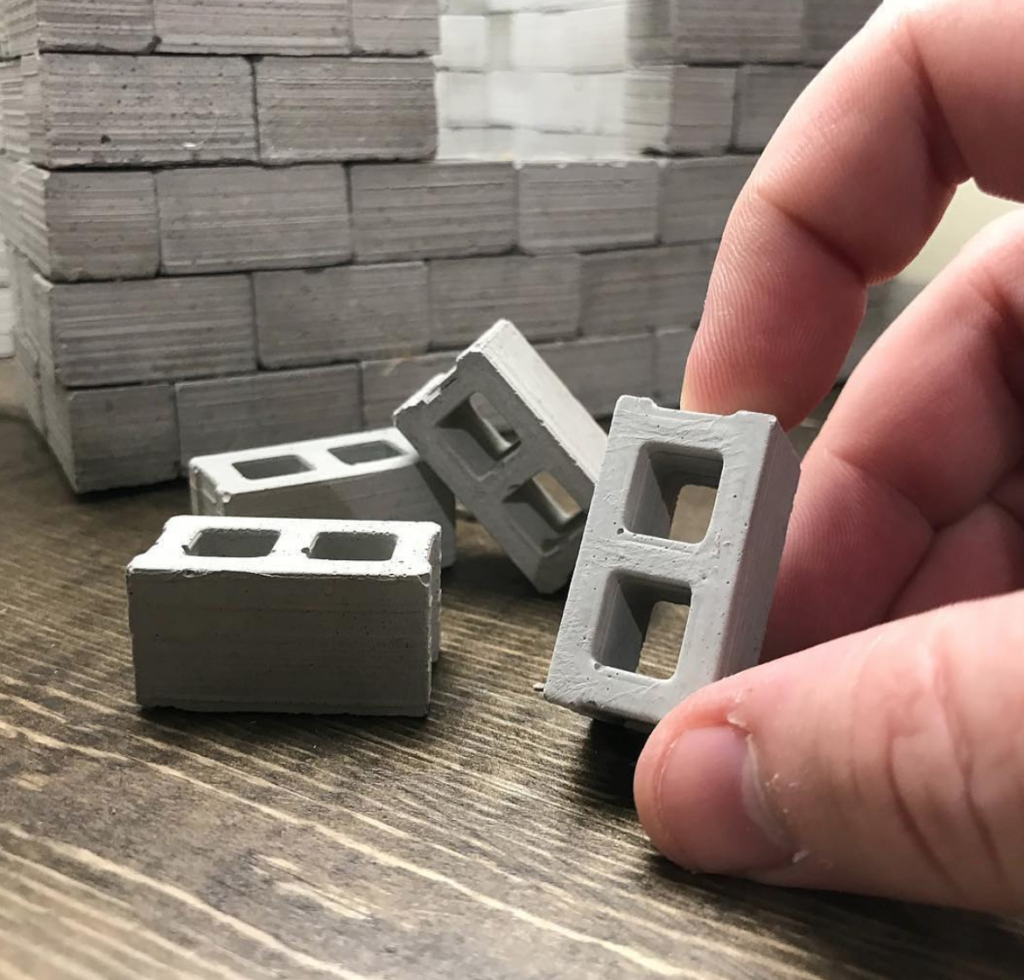
What have been some of the biggest challenges?
Scaling-up (Pun intended) is difficult in any business. In this business when these are all handmade and require a waiting period for the cement to dry, it presents challenges that can be very difficult to work through, especially during the holidays. We’ve revamped our manufacturing process but when Mini Materials started this we hadn’t considered about how we could manufacture enough cinder blocks to fulfill 300+ orders a month or manufacture over half a million cinder blocks in less than 3 years. Another thing not considered at the beginning was how much marketing is required in something so niche and novel. It’s expensive to get constant eyes on our stuff, since most people aren’t generally searching for miniature building materials on a regular basis. So the monthly marketing expense is a hefty amount to maintain the large market share we own.
We’ve also made some poor decisions on product development. We’ve brought out some items that have tanked and just didn’t hit the mark that we anticipated. We get requests for different products daily. And we take our customer’s requests and feedback very seriously. We maintain a running list of about 30 products at one time that we’d love to try out and see if they will take off. The negative is that the initial R&D required to bring a new product out is about $1,000 per product on average and takes about 4 months to get it to market. The margins on these items in raw material is high, however the labor is intensive and therefore the profits are slim. When they hit, it’s great. But we’ve definitely had our fair share of losses.
The biggest and hardest decisions in I imagine any business big enough to have employees and personnel are hiring challenges. It’s quite difficult to find someone that has the experience required to work in the miniature masonry industry. It can be very mind-numbing work, it is very labor intensive and unfortunately the capability of compensation we can offer isn’t at a level commiserate with someone that may be willing to be more careful with quality control. With that said, we’ve been lucky. We’ve used family and friends that have supported us from the beginning and that has paid off in droves. But ultimately, you want to be able to run a company on your own and not have to lean as heavily on cheap support, so we’ve run into some struggles finding the right fit.
The greatest decision we’ve made and continue to make is to focus our marketing efforts on the customers we know want our stuff and not forcing the market to come to us. We realize novelty-based products have a shorter shelf-life. We feel that we have a narrow window of opportunity to stay in this market until we’ve over-saturated it, so we are currently rolling into more need-based markets like personalized or custom items. These decisions of remaining focused on filling our current customer desires and not trying to forcefully create a need gives us the greatest flexibility to pivot when necessary.
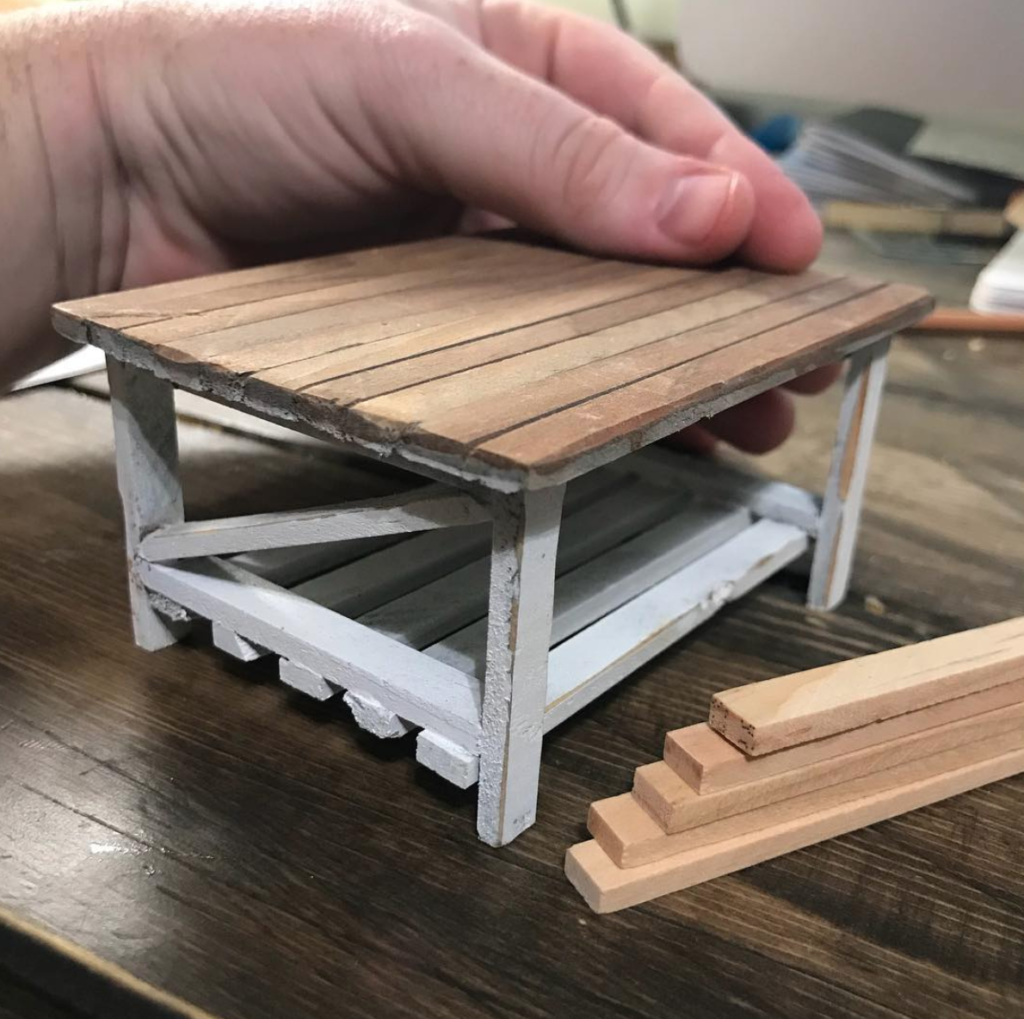
Secondly, since Mat and I both have more masculine views on our branding appeal, we realized we had a void bringing in the feminine market. Luckily we had Kathy Hofma and Alli Goldwag available to help. Kathy’s inputs on some social media marketing and product curation have helped set the tone for the female demographics. Alli has an active role running our fulfillment center, managing our Etsy platform, and curating new products and marketing efforts. We’ve gotten into the fairy garden world and the artistic maker-spaces that really drive sales for us regularly.
More in a general sense of mistakes in business ownership the biggest one is not letting a day of low sales, or a customer’s order return, or one bad product release hurt our overall outlook. Sometimes the let downs of running a business can hurt the appeal and make you ask yourself if it’s worth the amount of work it takes for us to continue the growth. But if you don’t rapidly change your feelings and create the excitement it will show in what your customer sees. We know at times we’ve made these mistakes and realize if we dwell on them for too long it will make it even more difficult to continue the conquest.
The greatest thing Mat did in 2015 was start. He may not have known then what Mini Materials would require on a regular basis, he certainly didn’t know what it would become at that point, but he believed in himself and the idea.
“The biggest thing learned and what we would pass on is don’t give up. “
I know it’s cliché and a tale as old as time, but in any business the let downs and daily challenges of running a business are minuscule if at the end of the day you can look back on it and say you fought through. Additionally, you can’t be scared to admit you missed something or made mistakes. They are bound to happen, especially in a market like the maker-market, something you think is going to be well-received may flat line, admit it didn’t work, don’t force it, and move on to the next one.
What has been your greatest achievement so far?
We’ve sold over 10,000 units of our best selling product the 24 pack of cinders on a pallet.
We’ve manufactured and sold over 500,000 miniature cinder blocks since our inception.
We’ve grown by 200% year over year from year 1 to year 2 and grew by 40% in profitability from year 2 to year 3 on similar gross revenue numbers.
We’ve dealt with temperature issues, bad cement recipe encounters based on chemistry make-up of the mixture, shrinking silicone molds, and a lack of manufacturing assistance have presented their share of problems that we’ve successfully navigated through.
What are your goals for the future?
We would love to be able to offer products in more scales than we do.
We are trying to bring out 10 to 12 new products a year, while maintaining our best sellers.
We are redeveloping our website to be even more appealing and easier to shop.
We have to improve our business processes in manufacturing and bringing products to market in a quicker turnaround from conceptual ideas to inventory build-out. With that requires an emphasis on quality personnel that we can count on to produce at high levels and at a level of quality we deem worthy for our customers. Once we get both of these nailed down Mini Materials will thrive.
What advice do you have for someone who is just getting started with their own project?
First, get started!
Secondly, don’t let the company own you and your time. Neglecting family and friends is not ideal in any business endeavor (owned or employed). Yes, you should work hard on it and yes it will take up a considerable amount of your time at the beginning but make sure you don’t let it run your life.
Do you know how to begin? Understand the underlining factors that can easily trip you up early on when cashflow isn’t high, understand your business rules and regulations, and tax codes. Once you get that squared away, get started.
We frequent Reddit Entrepreneur and what we see a lot of is there is a ton of talk and not a lot of doing. Lots of ideas exist and lots of opportunity is available.
“The mistakes made are not taking the risk to begin and also not planning for as many outcomes as possible. “
Over-guaranteeing and underperforming will kill any business but a start-up that falls into this mode will die a very quick death. Manage growth conservatively, even when it is exciting when things are firing on all cylinders. We make this mistake even today, three years in, but are doing our best to limit the damage.
Which resources, tools, insights have been the most helpful to you?
Most of it is instinctual and internal between Mat and me and with lots of inputs from Alli and Kathy. We do use our customer’s for advice on some business decisions especially with product decisions.
Reddit has been essential to our growth. Mat used it regularly to get advice and also to give raw and transparent details of the business along the way. That willingness to be open has made Redditors big supporters of Mini Materials and that’s been huge. We are on various Facebook groups and forums of small business owners as well, just being active and getting our name out there regularly builds brand awareness.
What’s the most impressive structure built by you and/or customers with Mini Materials?
Early on, the U.S. Navy purchased a large order of cinder blocks to build a diorama to be used for “rock drills” or rehearsal of concepts during wartime efforts. That was pretty awesome.
Lately, we’ve seen artists like Pablo Dona do a very neat artistic diorama with our cinder blocks and bricks showcased in an art museum in Miami, Florida.
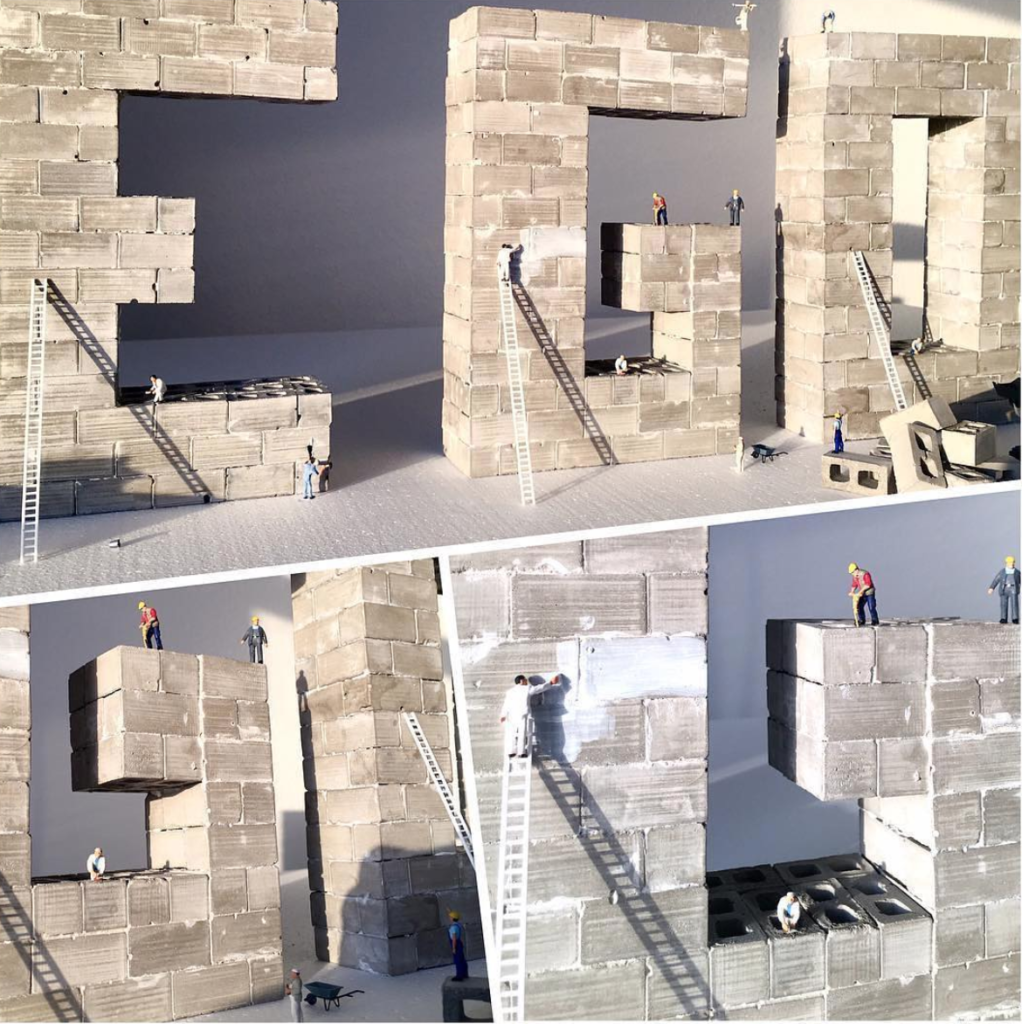
eHow has done a eSeries on miniature building and used our materials in every episode to build items like a farm house table, an outdoor patio set, and several other realistic builds.
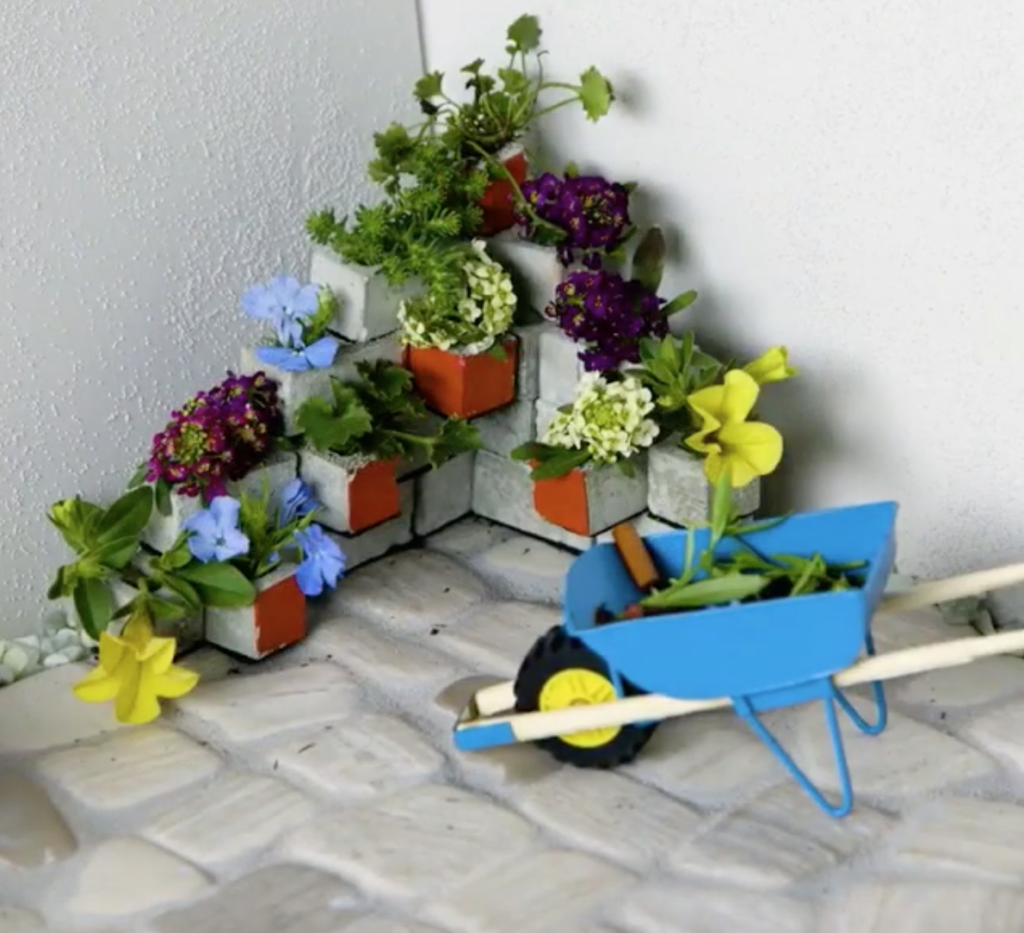
For us, the coolest thing we did (before eHow J) was mimic a farm table DIY in miniature form based on plan sets done by Ana White. We then put a kit together to sell so customers could build the same thing on their own. Then they could stain it, decorate it, or alter it to make it theirs.
What’s the most unique use for Mini Materials you’ve heard of?
The Navy’s use was pretty darn unique. It’s cool that we were able to be a part of that and be the supplier for them on that project.
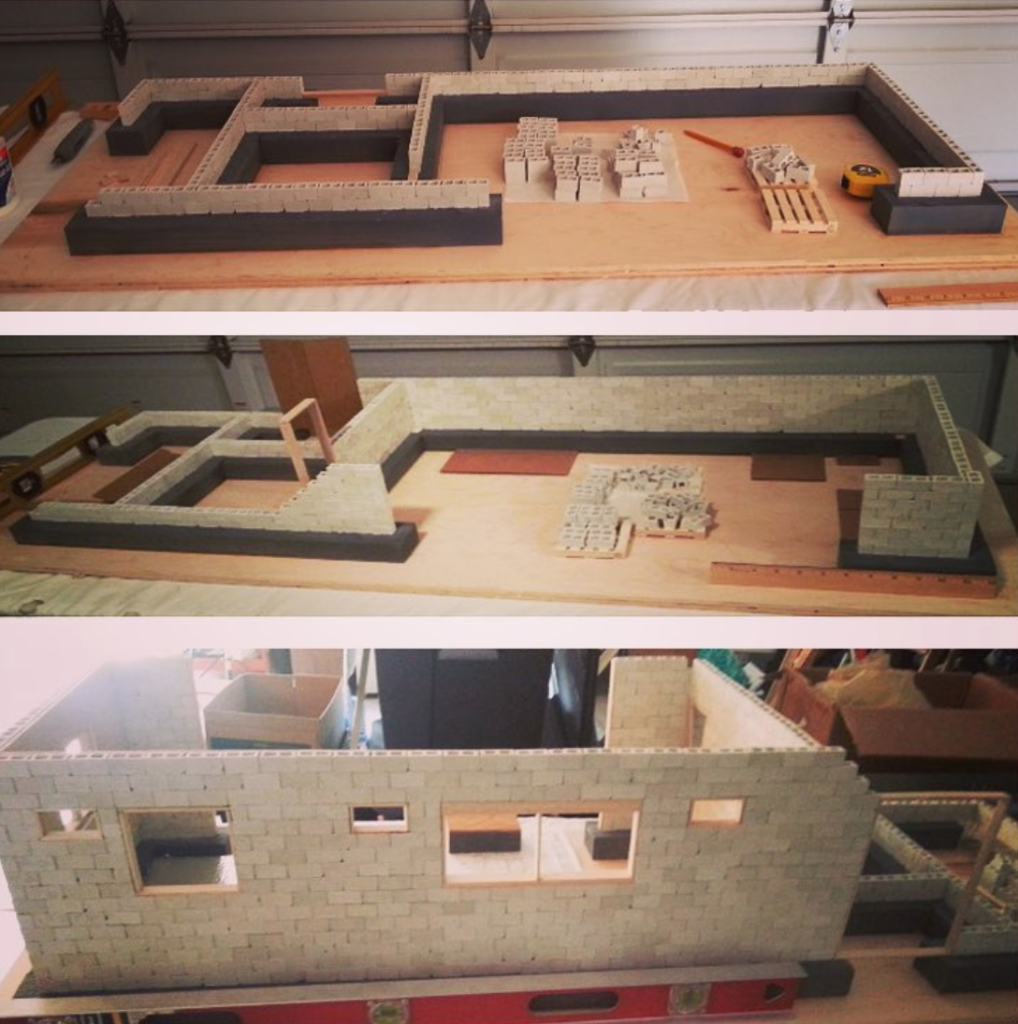
We get asked regularly for broken blocks to create realistic gamer scenes for Warhammer 40k, Magic the Gathering, Gloomhaven, and other tabletop castle builds as well. Believe it or not our damage rate on cinder blocks is so low now that we have to break the blocks with a hammer in order to meet those requests. But we do it because it’s a great market to be in and we enjoy the scenes the gamers come up with.
Where can we learn more about you and Mini Materials?
Website: www.minimaterials.com
Instagram and Twitter: @minimaterials
Facebook: https://www.facebook.com/minimaterials/
Blog: https://www.minimaterials.com/blogs/news
Etsy: https://www.etsy.com/shop/minimaterials

